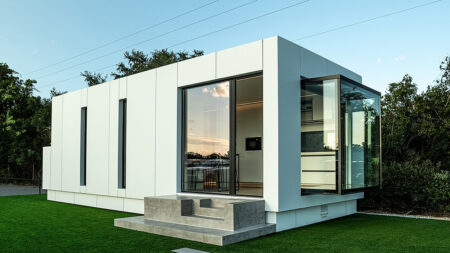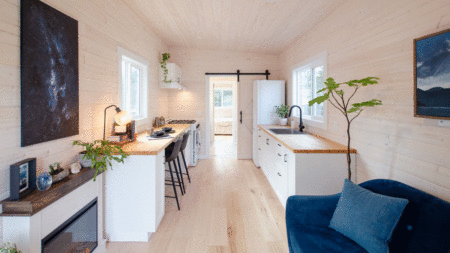3D-printed housing is not new, but the successful construction of one in an earthquake-prone area is unheard of. Well, Guatemala recently not only received its first 3D-printed house but it is constructed in a tectonic region as well. Spearheaded by Progreso, a leading cement company in Central and South America, in partnership with COBOD International, the venture has successfully demonstrated the viability and structural integrity of the 3D-printed housing during the local seismic activity.
This earthquake-resistant 3D-printed tiny house is yet unnamed but bears the marks of traditional local craftsmanship in the form of a thatched roof. Built using COBOD’s BOD2 printer, the construction includes the 3D printer following a pre-planned blueprint and emitting a cement-like mixture in layering to create a shell.
According to New Atlas, a COBOD representative claimed that this house was designed to withstand even a critical earthquake. The construction of Guatemala’s first 3D-printed house took only 26 hours, spread over seven days.
Also Read: Inventive Maine University Students 3D Printing Affordable Homes Using Bio Materials
The 3D printer only erected a concrete shell, which was further completed by human builders by adding windows, wiring, plumbing, and roof. Big windows make up for the most part of the walls of this earthquake-resistant 3D-printed house, with wooden slats taking up the job of ventilators.
“The project has successfully taken steps to validate the structural viability of 3D construction printing in a seismic-prone region. Due to the use of 3D printing, the house features highly organic-shaped walls that would otherwise be extremely expensive, even unfeasible to complete with concrete blocks, the region’s predominant building material,” the press release states.
Also Read: Homesteader Tiny House Packs a Punch With Three Bedrooms and Fireplace
The single-floor tiny house offers a 527 sq. ft. interior. Following a basic layout, the raw concrete texture has been left untouched to augment the natural beauty. There is a central living room with a table and chairs, a small kitchen with a sink and storage cabinets, a bathroom, and a room to be used as an office or bedroom.
Although the earthquake-resistant 3D-printed tiny house is a feat in itself, the brainchild of COBOD and Progreso is not yet confirmed to see a commercial-scale construction. This prototype, research tool, however, can provide an effective housing solution in regions prone to seismic activity.



Follow Homecrux on Google News!




